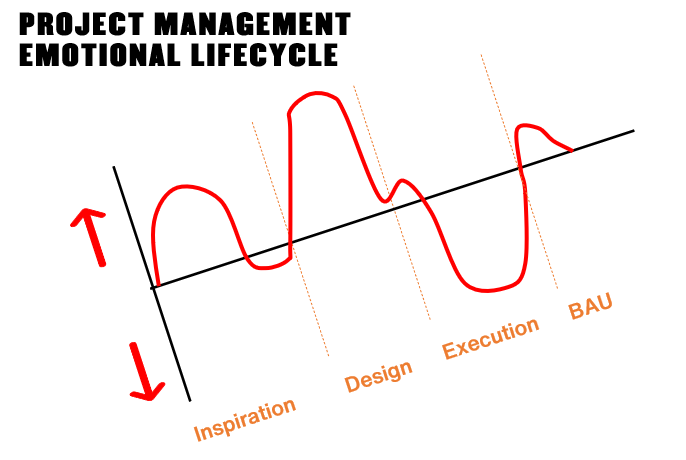Why Project Management Sucks. In Blackboard Fridays Episode 47, Jacob talks about Productivity and Leadership. Need this implemented into your business? Talk to the international business advisor who can do exactly that – Contact Jacob, Learn More, or Subscribe for Updates.
If you’ve ever attempted to change something significant within your business, then like it or not you’ve been “a project manager”.
Now, some people LOVE project management. The idea of waterfall gantt charts, programming dependencies, and tracking budgets really gets their juices flowing. By and large, these people ARE NOT fast growth entrepreneurs.
Because for the rest of us, Project Management Sucks. And it’s for one obvious reason – the processes that work really well for large corporations simply do not profitably translate into SMEs.
Thankfully, there IS a project process that every SME we’ve worked with applies with ease.
And that’s the topic of this week’s video.
Who is Jacob Aldridge, Business Coach?
“The smart and quirky advisor who gets sh!t done in business.”
Since April 2006, I’ve been an international business advisor providing bespoke solutions for privately-owned businesses with 12-96 employees.
At this stage you have proven your business model, but you’re struggling to turn aspirations into day-to-day reality. You are still responsible for all 28 areas of your business, but you don’t have the time or budget to hire 28 different experts.
You need 1 person you can trust who can show you how everything in your business is connected, and which areas to prioritise first.
That’s me.
Learn more here. Or Let’s chat.
Transcript
Have you ever had a great idea for your business that hasn’t gone anywhere?
Perhaps an initiative to help yourself, your team, or your clients that you’ve not successfully managed to implement.
Perhaps you as a business owner have discovered something that thousands of other business owners have also discovered: Project Management Sucks.
Why Does Project Management Suck?
Because project management, when you dive into it, it’s designed for massive corporations as a thinking/ intellectual/ CYA exercise.
Try and apply project management “properly” and you will get sucked into the vortex of Gantt chart, waterfall diagrams, software processes, meetings, dependencies … none of which take into account the number one thing that actually determines whether your idea will get implemented in your business!
How does your business, your team, feel about your idea?
In private enterprise, businesses that are owned by individuals and not some massive 10,000 staff conglomerate that’s sitting on the stock exchange, the feelings of the business leader/s (that’s you and your team) have a massive impact on day-to-day operations and especially creating sustainable change.
The Emotional Project Journey
So let’s say you’ve got a great idea.
You’re down here at the start of this journey, with an idea that you know will take your business somewhere special and different, take you to the next level, and create something meaningful for your clients and your team.
Do you know what’s that future journey will look and feel like? You can do all of the planning in your head, but if you don’t know the emotional rollercoaster that you and your business are going to go on to create that change, you run the risk of either:
- Failing completely, or
- Getting halfway through and deciding “Well, you know that’s close enough.”
So let me talk you through exactly the emotional journey you’re going to go on, and through which you’re going to have to hold your team accountable.

Here is the diagram from the video, and we can see the black line in the centre is moving “up and to the right” – exactly where we want our business revenue / profit / NPS / culture to be moving.
To the side, above and below the black line, we have two arrows – one representing “we’ve got “UP Energy” where you exude positivity, and one for “DOWN (introverted) Energy” where you start really dwelling in yourself.
Now when you have a great idea, the start of this journey, your immediate reaction is up energy and it’s going to be the same for your team.
What you often don’t realize is that you are embarking on a 12 to 18 month journey. Meaningful change takes time to design and it takes time to implement so that it becomes businesses as usual (“BAU”) within your business.
So that initial inspiration begins to wear off, usually around two or three months into process – sometimes quicker if this is a small project (so will move faster through the cycle) or if you have a history of bright ideas that never work.
So after a short period of time, your initial energy will dissipate and you’ll fall down into that well. This is known as the Inspiration Phase of your idea.
Bright Shiny Object Syndrome
Here’s the challenge for most business owners who are attracted to bright, shiny, objects – always half-searching for the next squirrel. SQUIRREL!!

As soon as that energy dips, this type of business owner goes looking for the next bit of inspiration, the next little boost, the next dopamine hit. Having new ideas every week is way easier than doing anything about them.
The impact this has on your culture is enormous, as your team begin to realize they don’t actually need to implement any of your ideas because you never actually take them any further than Inspiration Phase. You have a great idea one week, and you can have another great idea next week, and they never actually get implemented so why should your team bother listening to any of your ideas at all?
From Inspiration into Design into Execution into No Thanks
So the first thing you need to do is hold yourself accountable to shift from Inspiration into Design.
Strategic design is the part in the project management journey where you work out what needs to change, why, and what are the steps to execution. You start planning it out. You start building a business case commercially, culturally, personally. What impact will this change have on the business?
After moving through the dip, the energy at this phase in the project starts to go through the roof.
You and your team start to feel really excited because you can see all of the change that’s forthcoming and all of the benefits that are going to come.
You feel great! But it doesn’t last, and this is the main reason why projects fail.
When you shift from Design into Execution, the energy shifts from that up, inspirational, “We can see where this is going” to … “Actually I need to change right now. And I’d rather not change, thank you very much”.
Pushback is Positive
At about this point, which is often somewhere about six to nine months into a sizable change journey, you start to get real resistance and pushback from your team.
My frame on this is that “Pushback is Positive”. Pushback is telling you that the team are now engaged and that they now realize they need to change.
At last they have realised that this isn’t one of your squirrel ideas which they can ignore – this is actually going to happen. When they begin feeling into change, the natural instinct is to start to resist. They start to ask “Do we really need to make this change?”.
You need to hold them accountable to this journey, because at first doing things differently is going to be harder. It’s going to hurt. People are not going to want to change.
That’s why up here in the Design phase you’ve painted the picture of the benefits of change, so that you can hold them to that ambition all the way through the Execution Phase of the project.
It Gets Better
It does get better. Eventually you reach a point where continuing to change is easier than going back to the old way of doing things.
You start to get the return on investment, the benefit of that implementation, and the calm of the new normal. The change that has maybe taken 12-18 months has now become “Business as Usual”. Your business has grown – the black line has moved, as planned, up and to the right – and the neutral energy state on the line is higher than when you began.
There’s one last part about project management that often gets overlooked – and that’s the little bump at the end.

Right here, the change has occurred.
You’ve taken your idea and successfully taken it all the way through to execution.
BAU means the team are calm … and many won’t even remember the project process. Some of them weren’t even there when this change started!
So you need to take the time at the end of a change process to have a little bit of a celebration, a win to reflect on the improvement and the journey, to remind your team “This may be normal today, but do you remember where we came from?.”
“This is the journey that we went on. Look how far we’ve come.” Now take a moment (perhaps with sparkline kombucha) to pat ourselves on the back for a job well done.
And then … as a leader in your business, you know inspiration is never done. BAU just means it’s time to look again.
What’s the next opportunity for change?
What’s the next roller coaster that we’re ready to go on?
And how much faster and more fully can we design, execute, and celebrate because we understand the feeling side of project management and creating sustainable change in our business?!
Next Steps
Never thought about how to turn your Squirrels into properly designed strategic projects? Struggle to make it through Execution, to fully embrace an opportunity and make it ‘business as usual’?
Then we need to chat, because I LOVE helping small and medium size business owners to simplify and enjoy meaningful change in their business.
- Email me jacob@jacobaldridge.com (I read them all)
- Call, Text, or WhatsApp me +61 427 151 181
- Or just Subscribe https://jacobaldridge.com/about/subscribe-to-jacob-aldridge-com/ to stay in touch





[…] executing change has its own challenges (as we discussed when we talked about Why Project Management Sucks, often it’s even earlier in the process that we hit the first […]
[…] Episode 47, Why Project Management Sucks – https://jacobaldridge.com/business/why-project-management-sucks/ […]